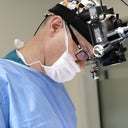Hello I wanted to know if a deviated septum can influence position of the tip or if the tip is very asymmetrical does the septum have anything to do it in some cases?
Answers (12)
From board-certified doctors and trusted medical professionals
More Rhinoplasty Questions
See all Rhinoplasty Q&AWE SEND PRETTY
EMAILS
What’s trending? Who’s turning heads? Which TikTok myths need busting? We’ve got you. No fluff, no gatekeeping—just real talk. Get our free, unfiltered newsletter.







